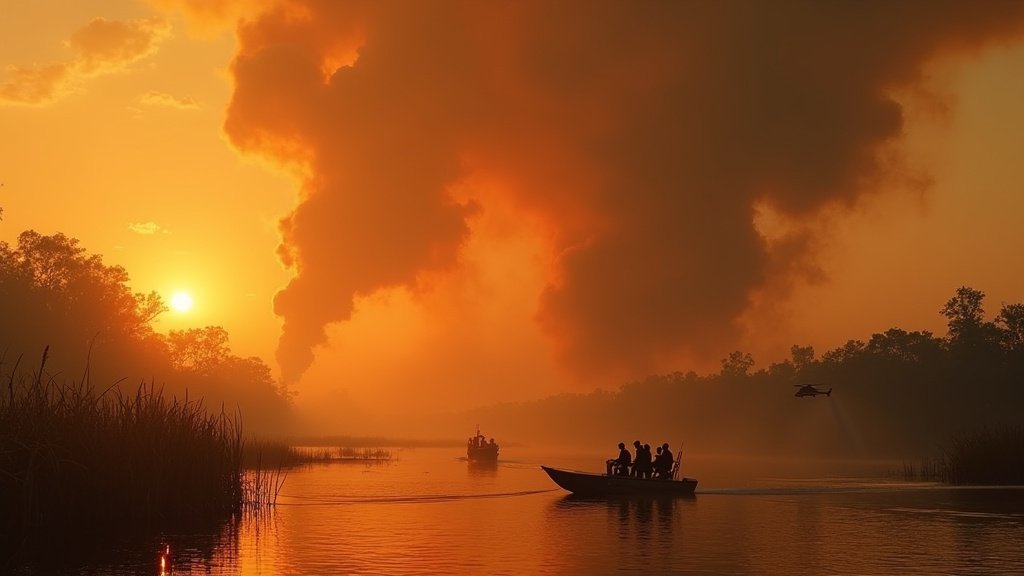A significant wildfire, identified as the “Mile Marker 39” fire, has consumed approximately 48,000 acres in the Florida Everglades, reaching a crucial 60% containment milestone as of Saturday, August 23, 2025. This blaze has become the largest wildfire in Florida for the current year, prompting ongoing efforts by the Florida Forest Service to manage its spread.
Firefighting operations are facing the unique challenges presented by the Everglades ecosystem, with teams utilizing airboats to navigate the wetlands and focusing suppression efforts on accessible areas. Helicopters have been deployed to conduct water drops, aiding in the containment strategy. The cause of the fire remains under investigation, though lightning strikes during recent thunderstorms are being considered a potential ignition source, given the natural fire cycles in the region. Environmental conditions, including abundant dry vegetation and wind patterns influenced by systems like Hurricane Erin, have contributed to the fire’s rapid growth and spread of smoke across South Florida.
The pervasive smoke from the Everglades wildfire has significantly impacted air quality and visibility across Broward and Miami-Dade counties. Air quality alerts were issued, advising residents, particularly those sensitive to air pollution, to limit outdoor activities. Visibility on roadways, including major routes like I-75, has been reduced, leading to warnings for motorists to exercise caution. Experts suggest that while natural fires are a part of the Everglades’ ecological cycle, the increased frequency and intensity of such events may be linked to broader environmental shifts.
The Mile Marker 39 fire is located in the 3A North Conservation Area of the Everglades, bordered by the Broward-Palm Beach county line to the north, I-75 to the south, US Highway 27 to the east, and the Francis S. Taylor Wildlife Management Area. While the fire has not resulted in reported structural losses, the extensive smoke plume is a noticeable effect on the landscape and daily life in nearby communities, including Miami. The situation is a prime example of the trending environmental news impacting the region, with continuous updates sought by residents.
Historically, large wildfires have occurred in Florida, particularly during drought years, with the 1998 firestorm being a notable event that burned nearly 500,000 acres and led to significant changes in the state’s fire management policies. The current Everglades wildfire underscores the ongoing challenges of balancing natural fire cycles with the safety and well-being of populated areas, especially in the context of evolving climate conditions that can exacerbate dry seasons and increase wildfire risks. As efforts continue, authorities are closely monitoring the fire’s progression and its impact on the surrounding environment and communities.





